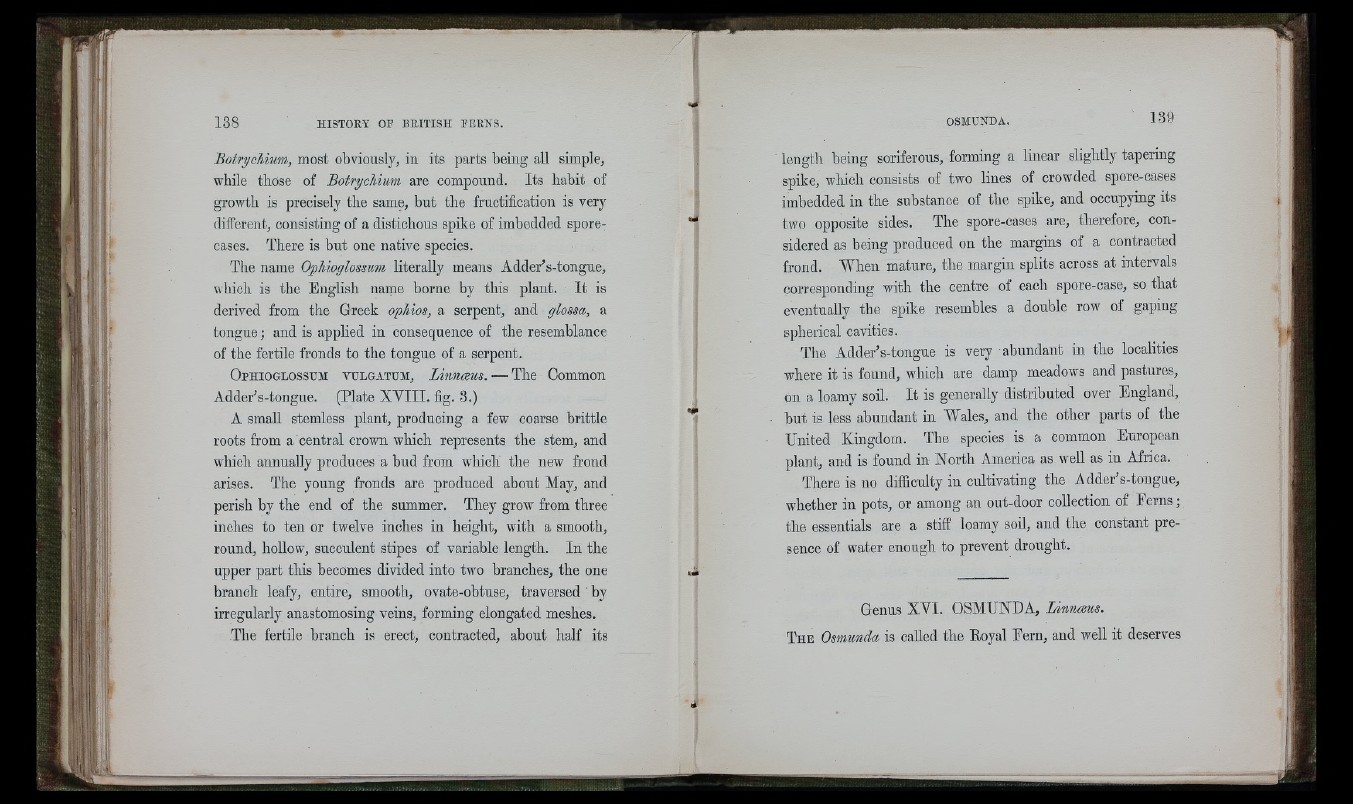
Ii
Botrychium, most obviously, in its parts being all simple,
while those of Botrychium are compound. Its habit of
growth is precisely the same, but the fructification is very
different, consisting of a distichous spike of imbedded spore-
cases. There is but one native species.
The name Ophioglossum literally means Adder’s-tongue,
which is the English name borne by this plant. It is
derived from the Greek ophios, a serpent, and glossa, a
tongue ; and is applied in consequence of the resemblance
of the fertile fronds to the tongue of a serpent.
O ph io g lo s sum vu lg a t um , Linnoeus. — The Common
Adder’s-tongue. (Plate X V III. fig. 3.)
A small stemless plant, producing a few coarse brittle
roots from a central crown which represents the stem, and
which annually produces a bud from which' the new frond
arises. The young fronds are produced about May, and
perish by the end of the summer. They grow from three
inches to ten or twelve inches in height, with a smooth,
round, hollow, succulent stipes of variable length. In the
upper part this becomes divided into two branches, the one
branch leafy, entire, smooth, ovate-obtuse, traversed ' by
irregularly anastomosing veins, forming elongated meshes.
The fertile branch is erect, contracted, about half its
length being soriferous, forming a linear slightly tapering
spike, which consists of two lines of crowded spore-cases
imbedded in the substance of the spike, and occupying its
two opposite sides. The spore-cases are, therefore, considered
as being produced on the margins of a contracted
frond. 'When mature, the margin splits across at intervals
corresponding with the centre of each spore-case, so that
eventually the spike resembles a double row of gaping
spherical cavities.
The Adder’s-tongue is very abundant in the localities
where it is found, which are damp meadows and pastures,
on a loamy soil. It is generally distributed over England,
hut is less abundant in Wales, and the other parts of the
United Kingdom. The species is a common European
plant, and is found in North America as well as in Africa.
There is no difficulty in cultivating the Adder’s-tongue,
whether in pots, or among an out-door collection of Eerns ;
the essentials are a stiff loamy soil, and the constant presence
of water enough to prevent drought.
Genus XVI. OSMUNDA, Unnmus.
The Osmunda, is called the Royal Eern, and well it deserves